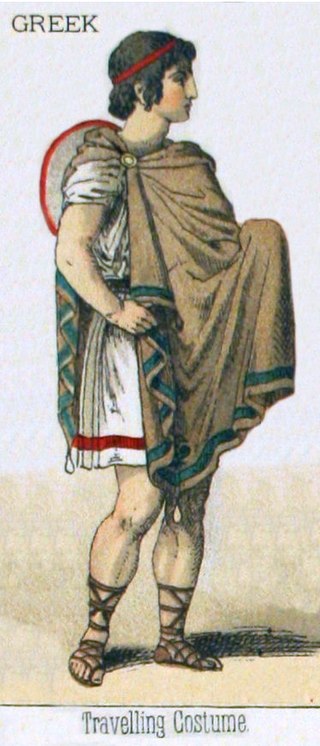The ancient Greeks were not that to elaborate when it comes to their clothing. In fact, the clothes they wore were made for comfort and function and they were made simply. The ancient Greeks are very creative they could style and restyle a single piece of fabric to be suitable for any particular fashion or occasion. And with the summers being heartlessly hot, the less fabric and less complicated seams, the better. In this article, we are going to give you a guide to Ancient Greek fashion.
What Did the Ancient Greeks Wear?
The clothes that the ancient Greek wore had a loose fitting and both men and women typically wore sleeveless tunics. They typically wore two pieces of clothing that were draped around their body that was composed of an undergarment and a cloak. As we mentioned earlier, Ancient Greek clothes were mostly based on function, necessity, protection, and materials rather than a fashion statement. That’s why their clothes were just simple, loose-fitted, and free-flowing. Usually, their clothes were cut to various lengths of rectangular linen or wool fabric and was homemade. They also secure their clothes with minimal sewing, ornamental clasps, belt, or girdle. Their clothes were mostly interchangeable among men and women. But women wore longer clothes while men liked to wear their clothes to their knees or depending on the occasion.
Types of Clothes
The style and the type of clothes that the ancient Greek worn depended on who was wearing it and its function and the job required of the person who was wearing it. There are different types of clothes that was derived from a basic tunic. Let’s take a look at the types of clothes that the ancient Greek wore.
Chiton – The chiton was a simple tunic garment that was made of lighter linen that was usually pleated. It is worn by men, women, and children. It has a wide rectangular tube that is secured along the lower arms and shoulders by a sequence of fasteners. The chiton usually fell to the ankles but there are shorter chitons that were sometimes worn in vigorous activities by slaves, warriors, and athletes.
Doric and Ionic are the two types of chiton. The Ionic chiton has a long enough fabric that can be folded in half to complete a wingspan while the Doric chiton is sleeveless and has a fold over at the top that is attached with fibulae at the shoulders and belted at the waist.
Peplos – The peplos was a square cloth that was worn over the chiton by women. The top third part of the cloth of the peplos was folded over and pinned at both shoulders which leaves the other downside of the cloth open. Sometimes, the peplos stands as an alternative for chiton.
Himation – The himation was an outer garment that was worn over the chiton or peplos. It is made of heavy rectangular material that is passed under the left arm and secured at the right shoulder. The cloak of the himation was twisted around a strap that is also passed under the left arm and over the right shoulder. The himation could also be pulled over the head to cover the face of the wearer when they were overcome with shame or emotion.
Chlamys- A chlamys was a seamless rectangular shaped garment that was made of woolen material. It is often worn by men for hunting and military purposes. The chlamys was also worn as a cloak that is fastened over the right shoulder with a button or a brooch. It is the common Greek military clothing from the 5th to the 3rd century BC.
Undergarments – The ancient Greek women often wore a strophion or a bra during that time under their clothes and on the mid-portion of their bodies. A strophion was made of a wide band of linen or wool that was wrapped across the breast and was tied between their shoulder blades. Ancient Greek women also wear a shawl known as an epiblema. While both men and women wore triangular loincloths known as perizoma as underwear.
Since the ancient Greeks rarely cut or sewn their clothes, they used fasteners and buttons to keep their clothes in place. They also use different pins, brooches, and small buttons. On the other hand, large pins called fibulae or peronei were often worn facing down at the shoulders to keep the peplos and chiton in place. Ancient Greeks also liked to wear sashes, girdles, and belt s at the waist as an alternative to buttons and fasteners.
Their clothes were often made with linen, silk, or wool with linen being the most common fabric because of the hot weather. Back in their day, it is a women’s responsibility to make the textile and the production of high-quality textile is often regarded as an accomplishment for women with high status.
